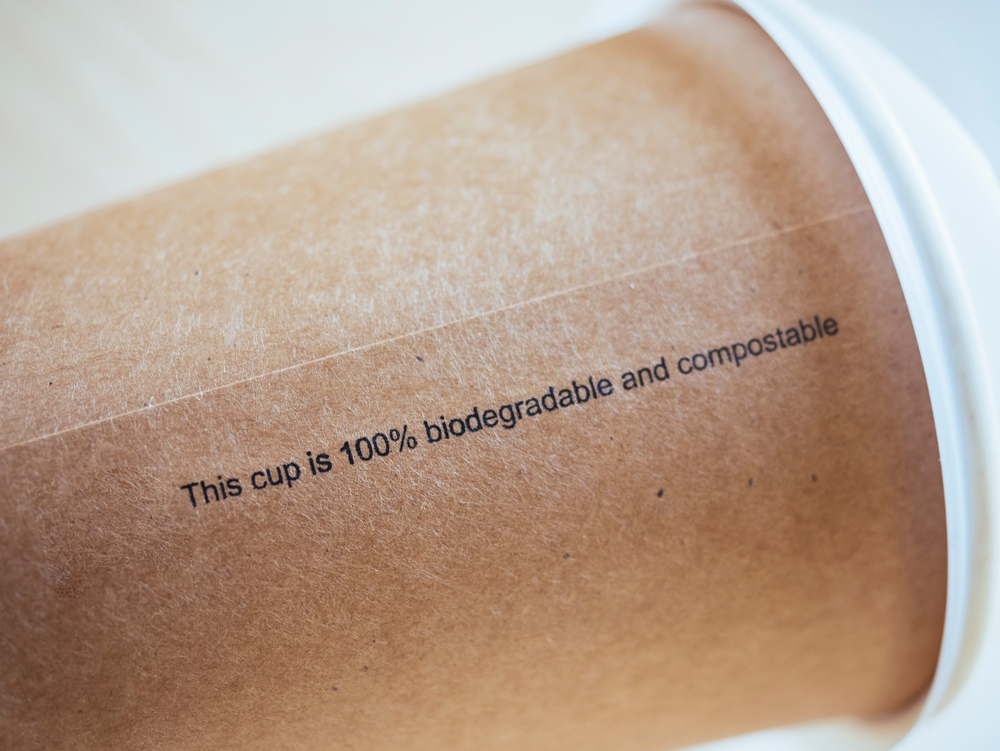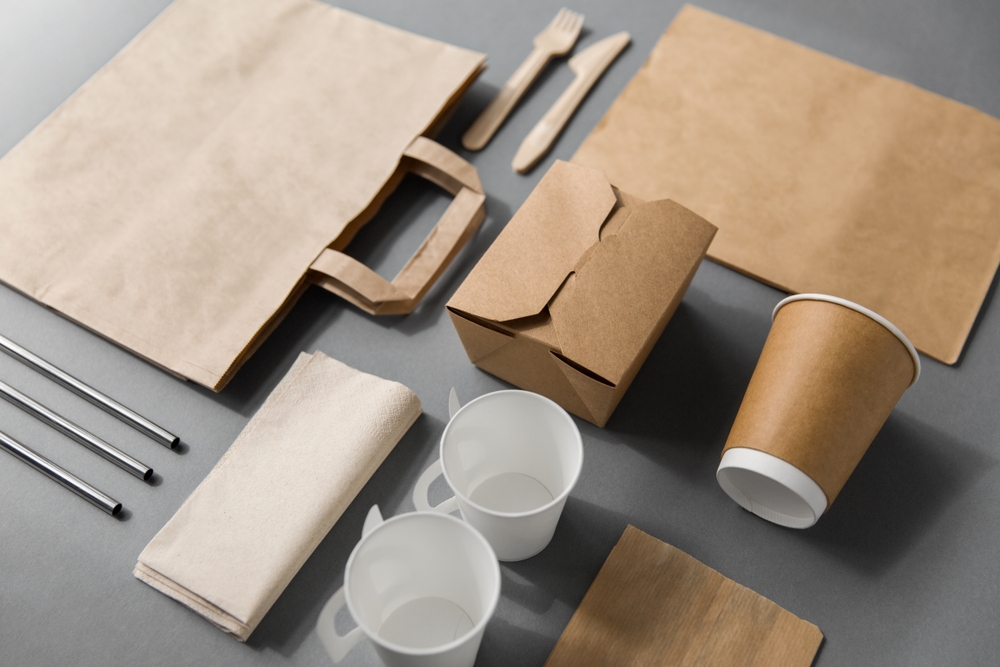Understanding Biodegradable vs Compostable Packaging: A Clear Guide for Eco-Conscious Consumers
By Anttoni Taimela · 19. March 2024
Choosing eco-friendly packaging options often leads to the debate: biodegradable vs biodegradable and compostable plastics and packaging.
Which is better for the environment, and which fits your needs?
In this guide, we simplify this complex topic, outlining the distinct properties and environmental impacts of each option.
We’ll help you understand the nuances of both biodegradable vs compostable packaging, so you can make an informed decision that mirrors your commitment to sustainability, without falling for greenwashed claims.
Key Takeaways
- Biodegradable materials welcome the decay party but bring along a variety of breakdown buddies, taking from a quick minute to centuries to leave the scene.
- Compostable packaging is the Hermione Granger of the pack, acing the decomposition exam in a specific timeframe, but only if it’s taken to the right type of facility party.
- Greenwashing is the packaging world’s dirty little secret. Peek beneath the eco-friendly cape with FTC guidelines to bust those environmental fibs!
Biodegradable Packaging: Breaking it Down
 Biodegradable Packaging
Biodegradable Packaging
Biodegradable packaging♻️, often made from biodegradable plastic, refers to a solution that naturally disintegrates and decomposes with the help of naturally occurring microorganisms.
Biodegradable plastic bags, as a type of these packaging materials, transform into natural elements typically within a year after disposal, leaving almost no trace of their existence.
You might ask, what’s the downside? Well, biodegradable packaging is not a one-size-fits-all solution.
It can be made from both bio-based and fossil fuels-based polymers.
The trick is to choose materials that offer a lower carbon footprint and reduced energy demand throughout the production lifecycle.
The Breakdown Process
You might wonder how this biodegradation process takes place.
The secret lies within the microorganisms that break down the polymer structure into small fragments, leading to decomposition.
It’s like a microscopic banquet where the biodegradable raw materials are on the menu.
Yet, this is not an immediate process. The timeline for biodegradation can vary widely, from as little as a few days to several hundred years, depending on the material’s composition and storage conditions.
It’s a slow dance that requires understanding and patience.
Examples of Biodegradable Materials
Some examples of biodegradable materials include:
- Paper and cardboard, which are common types of biodegradable material that decompose within weeks
- Organic fabrics like hemp and banana
- Innovative biodegradable plastics, such as plant-based plastics
- Mushroom mycelium, which serves as a sustainable packaging solution that decomposes rapidly
But the innovation doesn’t stop there. We’ve got:
- seaweed packaging
- packing peanuts from natural starches
- corrugated bubble wrap from recycled cardboard
- biodegradable air pillows
- cornstarch packaging, an affordable alternative to traditional plastics that biodegrades into non-toxic substances within several months.
Compostable Packaging: A Greener Alternative
 Compostable Packaging
Compostable Packaging
Let’s shift our focus to compostable packaging. While everything that is compostable is a biodegradable product, not all biodegradable materials are compostable. Confused?
Let’s clear the air.
Compostable packaging is like biodegradable packaging’s overachieving sibling.
It breaks down under specific conditions and contributes to soil health.
But what sets it apart is its ability to decompose into natural elements within a defined timeframe, without leaving harmful residues behind.
The Composting Process
One may ask, how is composting carried out? Composting is like a cooking recipe.
It requires specific ingredients: microorganisms, humidity, and heat, to create a finished unlike compostable, product.
This process effectively converts materials into organic matter or humus, typically within 6 to 12 weeks.
Yet, there’s a caveat. Compostable materials need adequate composting facilities that provide aeration for speedy decomposition.
And compostable plastics?
They need high-temperature industrial composting facilities for proper breakdown.
So, it’s crucial for marketers to clarify compostable claims when their products can’t be composted at home safely or within a reasonable timeframe.
Examples of Compostable Materials
 Compostable Packaging Materials
Compostable Packaging Materials
PLA (polylactic acid) and PHA (polyhydroxyalkanoates) derived from renewable resources like corn starch or sugar cane, are used to produce compostable packaging.
There’s also bagasse, the fibrous byproduct of sugarcane processing, used in compostable packaging.
Innovations in compostable materials also include biodegradable bags and compostable plastic mailers made from a blend of PLA and PBAT, and eco-friendly packaging tape using rice paper and non-toxic adhesives.
These biodegradable and compostable products offer sustainable end-of-life options by being commercially compostable and minimizing environmental impact with the use of compostable plastic.
The Environmental Impact of Biodegradable and Compostable Packaging
The environmental impact is not solely about the choice between biodegradable and compostable packaging.
Both types of packaging have their unique environmental impacts, which depend on various factors like carbon dioxide emissions and waste management practices.
It’s crucial to understand these impacts before making a choice.
Carbon Dioxide Emissions
Consider carbon dioxide, a well-known greenhouse gas.
The production phase of biodegradable polymers is a significant contributor to greenhouse gas emissions, but the impact varies depending on landfill methane capture efficiency.
Bioplastics typically result in lower greenhouse gas emissions compared to traditional plastics.
The plants absorb carbon dioxide during their growth, which offsets emissions upon decomposition.
However, bioplastic production can lead to more pollutants due to the use of fertilizers and pesticides in crop cultivation and chemical processing.
On the flip side, compostable materials, which are a type of organic waste, decomposed in aerobic composting conditions produce more carbon dioxide but less methane, a gas with a higher global warming potential, compared to anaerobic landfill conditions.
Waste Management
Responsible waste disposal is essential in reducing the environmental impact of packaging.
Compostable packaging should be composted, and biodegradable products, if not certified, may contaminate compost streams, hence should be disposed of in the recycling bin or trash.
Aerobic composting of organic materials, including compostable packaging, can reduce landfill methane emissions and provide environmental benefits.
Recycling organic waste, such as compostable items, is crucial as they decompose slowly in anaerobic conditions in landfills, leading to higher methane production, a concern for greenhouse gas emissions.
Therefore, proper waste management strategies are crucial for using biodegradable items and food packaging to support biological processing like composting.
Misconceptions and Greenwashing in the Packaging Industry
 Greenwashing Packaging
Greenwashing Packaging
Not all that glitters is gold in the packaging industry. Greenwashing, a sneaky practice of making misleading claims about the environmental benefits of a product, is unfortunately prevalent in the industry.
Companies often use vague and unverifiable claims along with terms like ‘natural’, ‘eco’, or ‘sustainable’ without clear substantiation.
FTC’s Green Guides and Certification
Luckily, the FTC’s Green Guides come to the rescue.
These guidelines aim to prevent misleading claims about biodegradability and compostability.
Marketers using environmental certifications or seals must clearly convey the basis for the certification and substantiate all express and implied claims associated with it.
How to Spot Greenwashing
Identifying greenwashing requires an investigative approach towards eco-claims.
Question marketing claims that highlight a product as ‘free-of’ a certain substance while potentially containing other harmful substances.
And for those claims of renewable energy or materials, verify the specificity of these sources and processes.
Scrutinize whether a company’s sustainability efforts are embedded in its operations rather than just a single campaign.
And be aware of misleading singular eco-friendly features that overshadow other significant environmental impacts.
Making the Right Choice for Your Business or Home
How can you make an informed decision for your business or home?
It all starts with understanding the differences between recyclable plastics, compostable, and biodegradable packaging.
Once you’re armed with this knowledge, you can make informed decisions that align with your values, practical needs, and sustainability goals.
Assessing Your Packaging Needs
Evaluating your packaging needs can be compared to mapping out a road trip.
You need to map out your route by researching sustainable options that reflect personal values and practical needs, and set clear sustainability goals.
Also, consider the availability of composting options. Without the opportunity to an industrial composting facility, compostable packaging may not offer its intended environmental benefits.
And don’t forget to engage with eco-friendly suppliers who offer reusable packaging solutions, thereby reducing reliance on single-use packaging and supporting sustainability initiatives.
Eco-Friendly Packaging Alternatives
We have a plethora of options for eco-friendly packaging alternatives.
Reusable packaging options, like durable tote bags, containers, or boxes, can minimize waste while providing an eco-friendly solution for storage and transportation needs.
Recycled and recyclable♻️ materials like:
- paper
- cardboard
- glass
- certain plastics
conserve resources and decrease waste generation. There are also zero waste solutions that leave minimal environmental impact, embodying a compostable product concept and composting environment that supports eco-conscious consumption.
Remember, the right packaging should consider the end-of-life options most accessible for their customers, like local recycling facilities, to ensure the materials are properly handled post-use.
Summary
In this journey, we’ve explored the complexities of biodegradable and compostable packaging, delved into their environmental impacts, uncovered the dark side of greenwashing, and learned how to make informed choices about packaging options.
As eco-conscious consumers, understanding these packaging options is only the beginning.
The real impact comes from our collective action – choosing packaging that aligns with our values, reducing our plastic waste ourselves, and holding companies accountable for their environmental claims.
It’s time we turn our eco-awareness into eco-action.
Frequently Asked Questions
Which is better compostable or biodegradable?
Compostable is the better choice as it doesn’t leave toxic residue and is already organic, while certain biodegradable products can take a long time to break down and may leave toxic waste behind. Choose compostable for a cleaner and quicker solution!
Does 100% biodegradable mean compostable?
No, 100% biodegradable does not necessarily mean compostable. While all compostable products are biodegradable, not all biodegradable products are compostable. So, it’s not a case of “one size fits all” in the world of eco-friendly biodegradable products break all.
What are the disadvantages of compostable packaging?
While compostable packaging is a greener option, it can still contribute to waste accumulation if not disposed of properly. Additionally, the need for special industrial facilities for decomposition can make disposal of compostable bags challenging.
Is compostable packaging better?
Yes, compostable packaging is better than traditional plastics and can help reduce waste in landfills. It’s an eco-friendly alternative that decomposes in the compost bin a much shorter time.
What is the difference between biodegradable and compostable packaging?
Biodegradable materials can break down naturally over time, but not all of them are suitable for composting. On the other hand, other compostable materials and packaging can break down into natural elements under specific conditions without leaving harmful residues. So, it’s like the difference between a recyclable container and a container with a cool label, but the cool label doesn’t make it recyclable!

